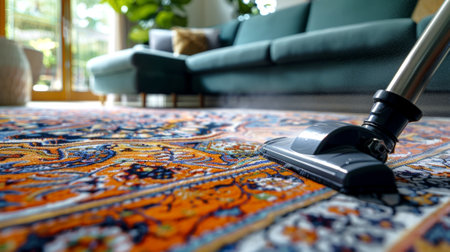Introduction to Bagua and Positive Energy
The Bagua map, a cornerstone of traditional Feng Shui, offers a structured approach to harmonising energy within living spaces. Originating from ancient Chinese philosophy, the Bagua divides your home into eight distinct areas, each corresponding to different aspects of life such as wealth, health, and relationships, with a ninth area at the centre representing overall wellbeing. While rooted in Eastern traditions, the principles behind the Bagua map have found relevance across the globe, including here in the UK. Adapting this ancient wisdom for a contemporary British home does not require dramatic changes—rather, it involves thoughtful adjustments and mindful placement of furniture, décor, and colour schemes. By overlaying the Bagua map onto your floorplan, you can identify which parts of your home are linked to specific life areas. This process allows you to make subtle but effective enhancements tailored to each room’s purpose, supporting a flow of positive energy that feels both authentic and accessible within a modern UK context. In this guide, we’ll explore how you can apply these principles room by room, blending tradition with practicality to create spaces that nurture happiness and balance.
Entrance Hall: Setting the Tone
The entrance hall in a British home is more than just a transitional space—it’s the first impression, both energetically and visually, for anyone who steps inside. According to the Bagua map, this area relates closely to career opportunities and the flow of positive energy (qi) into the rest of the house. In many UK homes, entrance halls are compact, often featuring letterboxes built into the door, shoe racks or storage benches, and sometimes a narrow corridor leading to the rest of the property. Creating a welcoming and ordered environment here is essential for setting an uplifting tone.
Approaches to Enhance Positive Energy at the Entrance
Harnessing positive energy begins with mindful organisation and intentional design. The following strategies address common UK hallway features:
| Element | Bagua Principle | UK Practical Tip |
|---|---|---|
| Shoe Storage | Clear Clutter to Allow Qi Flow | Use a closed shoe cabinet or bench to prevent shoes from cluttering the walkway and symbolically leaving outside concerns at the door. |
| Letterbox Area | Prevent Energy Leakage | Add a letter basket or organiser to collect post neatly; avoid letting mail pile up on the floor as it can disrupt qi circulation. |
| Narrow Hallway | Guide Energy Gently Inwards | Place a slim console table with fresh flowers or a welcoming lamp to soften sharp lines and direct positive energy further into your home. |
| Lighting | Invigorate Entrance with Yang Energy | A bright pendant or wall light ensures the area feels open and inviting, counteracting typical UK gloominess. |
Setting Intentions with Décor Choices
The Bagua suggests that what you see when you enter sets the energetic expectation for the home. Incorporate a cheerful doormat or art piece that reflects positivity—perhaps an image of an open landscape or an inspiring quote. A small mirror can be used thoughtfully (not directly facing the door) to expand perceived space and bounce light, but avoid placing mirrors so they reflect energy straight back out.
Engineering Positive Flow: A Practical Checklist
- Keep walkways clear and uncluttered at all times.
- Select functional yet attractive storage solutions suited to narrow British hallways.
- Regularly clear out old post and unnecessary items from entry surfaces.
- Add greenery if space allows—plants near the entrance symbolise growth and renewal.
- Check that lights are working and provide adequate brightness for darker months.
Treating your entrance hall as a vital energetic node—and tailoring solutions to typical UK layouts—lays the foundation for well-being throughout your home using principles from the Bagua map.

3. Living Room: Creating a Welcoming Space
Applying the Bagua map to your living room is a practical way to encourage positive energy and harmony within the heart of your home. In many British households, the living room serves as a communal space for relaxation and social gatherings, making it essential to optimise its layout and decor.
Furniture Arrangement
Begin by assessing the flow of movement through the room. According to Bagua principles, arranging sofas and chairs in a circular or semi-circular pattern helps foster conversation and inclusivity—an approach that aligns well with traditional British hospitality. Avoid blocking doorways with bulky furniture, as this can disrupt the natural flow of chi (energy). If possible, position the main seating area so it faces the entryway, offering a sense of security and welcome to both guests and residents.
Natural Lighting
Maximising natural light is vital for uplifting mood and energy. British weather can be unpredictable, so take advantage of daylight by keeping window sills uncluttered and using light-coloured curtains or blinds that allow sunlight to filter through. Strategically placing mirrors can also help reflect light into darker corners, enhancing the overall brightness and energy circulation in the space.
Personal Heritage through Art and Photos
The living room is an ideal spot to display family photos or artwork that reflects your heritage and personal story—a cherished aspect of British homes. In Bagua terms, this supports the Family or Ancestry area, typically located on the left side as you enter the room. Choose frames or art styles that resonate with your familys history or local culture, whether its a vintage portrait, a landscape painting from your favourite holiday spot in Cornwall, or hand-crafted pieces from local artisans. These personal touches not only boost positive energy but also create a meaningful environment where everyone feels they belong.
Engineering Note
When experimenting with layout changes, consider sketching out possible arrangements beforehand. Measure key pieces of furniture to ensure smooth traffic flow—ideally leaving at least 60cm pathways between items. For lighting adjustments, test different curtain weights and mirror placements at various times of day to achieve optimal results tailored to your homes unique orientation.
4. Kitchen and Dining Area: Nurturing and Abundance
The kitchen is widely recognised as the heart of the home, a place where nourishment, connection, and daily rituals converge. In the context of the Bagua Map, this area often relates to wealth, health, and family harmony. For UK homes, with their typically compact kitchens and emphasis on practical layouts, applying Bagua principles requires both creativity and an appreciation for local traditions.
Bagua Placement and Energy Flow
To begin, map out your kitchen’s position within your overall home Bagua. Ideally, kitchens situated in the southeast or east sectors support prosperity and family wellbeing. However, even if your kitchen falls elsewhere, you can enhance positive energy through mindful adjustments. Key focus areas include:
| Bagua Aspect | Practical Application in UK Kitchens |
|---|---|
| Wealth & Abundance (Southeast) | Display a bowl of fresh fruit on the worktop or table; keep herbs thriving on the windowsill. |
| Health & Family (East) | Ensure good light and airflow; use cheerful crockery and textiles. |
| Nourishment (Centre) | Maintain cleanliness; store food in clear containers to promote mindful eating. |
Common Features of UK Kitchens
British kitchens often balance form and function in smaller spaces. To harmonise Bagua elements with these features:
- Cupboards: Declutter regularly to prevent stagnant energy.
- Aga or Range Cookers: These act as a focal point—keep them spotless for vibrant chi.
- Tea Corners: A uniquely British tradition, dedicate a tidy spot for tea-making with quality teas and attractive mugs to foster comfort and social warmth.
- Dining Areas: Even if incorporated into the kitchen or kept separate due to space constraints, use fresh flowers or soft lighting to invite conviviality.
Nurturing Wellbeing Through Local Practices
The ritual of making tea can become a daily mindfulness exercise, aligning with Bagua intentions for health and calm. Keep this area uncluttered, with essentials close at hand. Use colours associated with nourishment—such as greens or earthy tones—for textiles or decor accents.
Troubleshooting Common Challenges
- Lack of Natural Light: Use mirrors thoughtfully to bounce light without reflecting cluttered areas.
- Tight Spaces: Opt for open shelving when possible; avoid overcrowding surfaces.
- Mismatched Appliances: Unify their look with coordinated accessories or subtle decorative touches.
By integrating Bagua principles with everyday British kitchen habits—from regular tidying to celebrating the humble tea break—you can foster a nurturing environment that supports abundance, wellbeing, and meaningful connections in your home’s most vital space.
5. Bedroom: Promoting Rest and Relationships
When applying the Bagua Map to bedrooms in UK homes, the focus is on cultivating a restful atmosphere and nurturing harmonious relationships. Given that British bedrooms often range from compact box rooms to more generous master suites, making thoughtful use of space is essential.
Arranging for Relaxation
Position the bed so that it has a clear view of the door but is not directly in line with it—a principle borrowed from both Feng Shui and practical British layouts. This arrangement provides a sense of security and calm, which is particularly important in smaller UK bedrooms. Avoid placing the bed under windows or directly beneath exposed beams if possible, as this can disrupt restfulness.
Optimising Storage
British homes often rely on fitted wardrobes or freestanding chests of drawers due to limited built-in storage. Keep wardrobes tidy and clutter-free, as chaos within storage areas can impact sleep quality and relationship harmony according to Bagua principles. Consider using under-bed storage for seasonal items, ensuring frequently used items are easy to access without crowding the room.
Choosing Bedding
Bedding preferences in the UK typically include duvets with covers rather than top sheets and blankets. Opt for natural fibres like cotton or linen in calming colours—soft blues, gentle greens, or muted greys—to foster tranquillity. Layered bedding allows for warmth adjustment suited to the British climate while providing a sense of comfort and luxury.
Nurturing Relationships
The Bagua Map associates the back right corner of the bedroom (from the entry) with relationships. Place paired objects—such as matching bedside tables or lamps—in this area to symbolise partnership. Display photos or artwork that reflect happy moments together, and avoid single items that could suggest solitude.
Personal Touches
Incorporate elements that support relaxation, such as blackout curtains for early summer dawns or soft rugs for warmth during colder months. Limit electronics in the bedroom to create a peaceful retreat. By thoughtfully arranging your bedroom with both Bagua wisdom and British living habits in mind, you create a sanctuary that supports rest and strengthens personal connections.
6. Bathroom and Utility Spaces: Cleansing and Renewal
These essential rooms, such as bathrooms, WCs, and utility spaces, often go unnoticed in energy flow discussions but play a significant role within the Bagua Map framework. In the UK, with many homes featuring compact bathrooms or combined utility areas, maintaining positive energy here requires both intention and practicality.
Understanding the Bagua Influence
According to the Bagua Map, bathrooms can dilute or drain positive energy due to the constant outflow of water. This makes it especially important to counterbalance these effects through mindful choices in layout, décor, and daily habits. Even in British homes where space is at a premium—think tiny WCs under the stairs or airing cupboards tucked into corridors—every detail matters.
Practical Tips for UK Homes
- Keep it Fresh: Regular cleaning is vital. Mould and limescale build-up are common issues due to the UKs damp climate. Use natural cleaning products where possible to avoid harsh chemicals that could disrupt energy flow.
- Airing Cupboards: These unique British features, used for storing linens and housing hot water tanks, should be kept tidy and well-organised. Place lavender sachets or cedar blocks to promote freshness and a calm atmosphere.
- Compact Layouts: In smaller bathrooms or utility rooms, minimise clutter by using clever storage solutions—think wall-mounted shelves or over-the-door hooks. Mirrors can help expand the sense of space and reflect light.
Maintaining Positive Energy
Always keep toilet lids closed when not in use to symbolically contain energy. Replace worn towels or bath mats promptly—tired textiles can hold stagnant vibes. Add small potted plants like ferns or peace lilies if there’s natural light; otherwise, opt for images of nature to evoke renewal.
Where possible, let fresh air circulate regularly—even a few minutes of an open window can shift the room’s mood. If privacy is a concern (as it often is in terraced housing), install frosted glass or use sheer curtains.
By giving attention to these overlooked areas, you’re not only following the principles of the Bagua Map but also enhancing your home’s overall wellbeing—one room at a time.
7. Garden and Outdoor Spaces: Extending the Flow
While much of the Bagua map’s application is focused on your home’s interior, extending its influence to your garden and outdoor spaces can further enhance positive energy. In the UK, gardens—no matter how small—are considered an essential part of life, providing a place for relaxation, gatherings, and even a touch of nature amidst urban living. Even a modest patio or balcony in a city flat can serve as a powerful zone for uplifting energy if approached with intention.
Applying the Bagua Map Outdoors
Begin by mapping the Bagua onto your garden or patio just as you would indoors. Stand at the entrance to your outdoor space and imagine overlaying the Bagua grid. Each section aligns with key aspects like Wealth (far left), Fame (centre back), and Relationships (far right). For instance, place vibrant flowers or a water feature in the Wealth area, or use lighting and climbing roses in the Fame sector for enhanced recognition and warmth.
Typical British Approaches
British gardens are renowned for their variety—from structured box hedges and cottage garden borders to compact city patios adorned with pots and hanging baskets. In any setting, select features that resonate with each Bagua area: bird feeders for Family & Health, cosy benches or bistro sets for Relationships, and aromatic herbs for Knowledge & Self-Cultivation. Even in small spaces, vertical planters or trellises can support climbing plants, maximising energy flow without demanding extra square footage.
Urban Spaces: Making It Work
If you’re working with limited outdoor space—like a London balcony or shared courtyard—focus on thoughtful arrangements. Mirrors can expand visual space and reflect light into shaded corners (supporting the Fame or Career areas), while small water bowls invite tranquillity to Wealth zones. The key is mindful placement: every pot, chair, or lantern should serve both function and intention according to the Bagua.
By extending Bagua principles into your garden or patio, you foster harmony between your home’s interior and exterior environments. Whether it’s enjoying a cup of tea among lavender bushes or tending to window boxes after work, these daily rituals help sustain positive energy throughout your living space.


